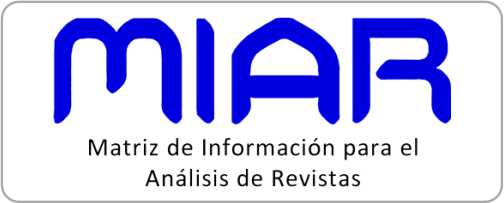ICTs used by Martial Arts instructors during COVID-19 quarantine in Panama
DOI:
https://doi.org/10.51252/rcsi.v1i2.160Keywords:
Judo, Karate, Social Networks, Virtual ClassesAbstract
Martial arts provide multiple benefits for those who practice them regularly, especially for physical and mental health. However, COVID-19 has limited the development of face-to-face activities that bring together a considerable number of people, and information and communication technologies (ICTs) may be an alternative. The objective of this study was to know the ICTs used by martial arts instructors during the quarantine by COVID-19 in Panama. To do this, a structured survey was developed, aimed at instructors with the third dan (Sandan), its equivalent or superior; through Google Forms. The target population was a group of 60 martial arts instructors from Panama; of which, at 80% confidence and 10% error, a representative random sample of 26 instructors was obtained. They were given a period of seven days to complete the survey. According to the results, before COVID-19, 26.9% claimed to have more than 40 students; but, after the mandatory quarantine was established, 53.8% have 10 students or less and only 3.8% continue with more than 40 students. The main social networks used were WhatsApp (100%), followed by Facebook (73.1%) and Instagram (61.5%). The main platform used for virtual classes was Zoom with 76.9%, although 23.1% of the teachers indicated that they do not offer virtual classes. About 53.8% considered the experience with virtual classes to be good, but 84.6% indicated the Internet connection as the main limitation.
Downloads
References
Akbulaev, N., Mammadov, I., & Aliyev, V. (2020). Economic Impact of COVID-19. Sylwan, 164(5), 113–126. https://doi.org/10.2139/SSRN.3649813
Barbosa, B., De Lima-Junior, D., & Da Silva Filho, E. (2020). The impact of COVID-19 on sporting events and high-performance athletes. J Sports Med Phys Fitness, 60(11), 1507–1508. https://doi.org/10.23736/S0022-4707.20.11309-4
Bourdas, D. I., & Zacharakis, E. D. (2020). Lockdown on Physical Activity in a Sample of Greek Adults. Sports , 8(10), 139. https://doi.org/10.3390/SPORTS8100139
Cabrera Ramos, J. F. (2020). Producción científica sobre integración de TIC a la Educación Física. Estudio bibliométrico en el periodo 1995-2017 . Retos, 37, 748–754. https://doi.org/10.47197/RETOS.V37I37.67348
Carratalá, V., Marco-Ahulló, A., Carratalá, I., Carratalá, H., & Bermejo, J.-L. (2019). Judo as a tool for social integration in adolescents at risk of social exclusion: A pilot study. Journal of Human Sport and Exercise, 15(1), 202–216. https://doi.org/10.14198/JHSE.2020.151.18
Delerna Rios, G. E., & Levano Rodriguez, D. (2021). Importancia de las tecnologías de información en el fortalecimiento de competencias pedagógicas en tiempos de pandemia. Revista Científica de Sistemas e Informática, 1(1), 69–78. https://doi.org/10.51252/RCSI.V1I1.104
Feldmann, A., Gasser, O., Lichtblau, F., Pujol, E., Poese, I., Dietzel, C., Wagner, D., Wichtlhuber, M., Tapiador, J., Vallina-Rodriguez, N., Hohlfeld, O., & Smaragdakis, G. (2020). The Lockdown Effect: Implications of the COVID-19 Pandemic on Internet Traffic. Proceedings of the ACM Internet Measurement Conference, 27–29. https://doi.org/10.1145/3419394.3423658
Gilles, E., & Baquero-Ruiz, A. F. (2016). Localización empresarial y globalización: elementos para una gestión moderna del territorio. Cuadernos de Vivienda y Urbanismo, 9(18), 174–193. https://doi.org/10.11144/JAVERIANA.CVU9-18.VDBA
Hajarian, M. (2015). Why people use social networks? International Journal of Social Science & Interdisciplinary Research, 4(6), 177–182. https://doi.org/10.6084/M9.FIGSHARE.13668479.V2
Hernández, R. M. (2017). Impacto de las TIC en la educación: Retos y Perspectivas. Propósitos y Representaciones, 5(1), 325–347. https://doi.org/10.20511/PYR2017.V5N1.149
Herrera-Valenzuela, T., Castillo-Fuentes, B., Cuadra-Aguilar, D., Zubieta-Planella, B., Valdés-Badilla, P., & Cofre-Bolados, C. (2019). Artes marciales y deportes de combate: una alternativa para mejorar la salud . Hacia Promoc. Salud, 24(1), 11–13. https://doi.org/10.17151/hpsal.2019.24.1.2
Ivankina, L. I., Trubchenko, T. G., Krukovac, E. M., Shaidullina, A. R., Shaftelskaya, N. V, & Chernyak, V. K. (2017). The Use of Information and Communication Technologies by Elderly People . The European Proceedings of Social & Behavioural Sciences: WELLSO 2016 - III International Scientific Symposium on Lifelong Wellbeing in the World, 235–242. https://doi.org/10.15405/epsbs.2017.01.32
Király, O., Potenza, M. N., Stein, D. J., King, D. L., Hodgins, D. C., Saunders, J. B., Griffiths, M. D., Gjoneska, B., Billieux, J., Brand, M., Abbott, M. W., Chamberlain, S. R., Corazza, O., Burkauskas, J., Sales, C. M. D., Montag, C., Lochner, C., Grünblatt, E., Wegmann, E., … Demetrovics, Z. (2020). Preventing problematic internet use during the COVID-19 pandemic: Consensus guidance. Comprehensive Psychiatry, 100, 152180. https://doi.org/10.1016/J.COMPPSYCH.2020.152180
Kusnierz, C., Cynarski, W. J., & Gorner, K. (2017). Social reception and understanding of combat sports and martial arts by both school students and adults. Ido Movement for Culture, 17(1), 30–37. https://doi.org/10.14589/IDO.17.1.5
López-Valenciano, A., Suárez-Iglesias, D., Sanchez-Lastra, M. A., & Ayán, C. (2021). Impact of COVID-19 Pandemic on University Students’ Physical Activity Levels: An Early Systematic Review. Frontiers in Psychology, 11(624567). https://doi.org/10.3389/FPSYG.2020.624567
Morales Capilla, M., Trujillo Torres, J. M., & Raso Sánchez, F. (2015). Percepciones acerca de la integración de las TIC en el proceso de enseñanza-aprendizaje de la universidad. Pixel-Bit. Revista de Medios y Educación, 46, 103–117. https://idus.us.es/handle/11441/45403
Origua Rios, S., Marks, J., Estevan, I., & Barnett, L. M. (2017). Health benefits of hard martial arts in adults: a systematic review. Journal of Sports Sciences , 36(14), 1614–1622. https://doi.org/10.1080/02640414.2017.1406297
Pandolfini, V. (2016). Exploring the Impact of ICTs in Education: Controversies and Challenges. Italian Journal of Sociology of Education, 8(2), 28–53. https://doi.org/10.14658/pupj-ijse-2016-2-3
Pegalajar Palomino, M. del C. (2015). Diseño y validación de un cuestionario sobre percepciones de futuros docentes hacia las TIC para el desarrollo de prácticas inclusivas. Revista de Medios y Educación, 47, 89–104. https://recyt.fecyt.es/index.php/pixel/article/view/61673/37684
Polero, P., Rebollo-Seco, C., Adsuar, J. C., Pérez-Gómez, J., Rojo-Ramos, J., Manzano-Redondo, F., Garcia-Gordillo, M. Á., & Carlos-Vivas, J. (2020). Physical Activity Recommendations during COVID-19: Narrative Review. International Journal of Environmental Research and Public Health, 18(1), 65. https://doi.org/10.3390/IJERPH18010065
Rodríguez-Gómez, D., Castro, D., & Meneses, J. (2018). Usos problemáticos de las TIC entre jóvenes en su vida personal y escolar. Comunicar, 26(56), 91–100. https://doi.org/10.3916/C56-2018-09
Published
How to Cite
Issue
Section
License
Copyright (c) 2021 Rubén Collantes-González, Pedro Ortega-Mendoza, Martín González

This work is licensed under a Creative Commons Attribution 4.0 International License.
The authors retain their rights:
a. The authors retain their trademark and patent rights, as well as any process or procedure described in the article.
b. The authors retain the right to share, copy, distribute, execute and publicly communicate the article published in the Revista Científica de Sistemas e Informática (RCSI) (for example, place it in an institutional repository or publish it in a book), with an acknowledgment of its initial publication in the RCSI.
c. Authors retain the right to make a subsequent publication of their work, to use the article or any part of it (for example: a compilation of their works, notes for conferences, thesis, or for a book), provided that they indicate the source of publication (authors of the work, journal, volume, number and date).














